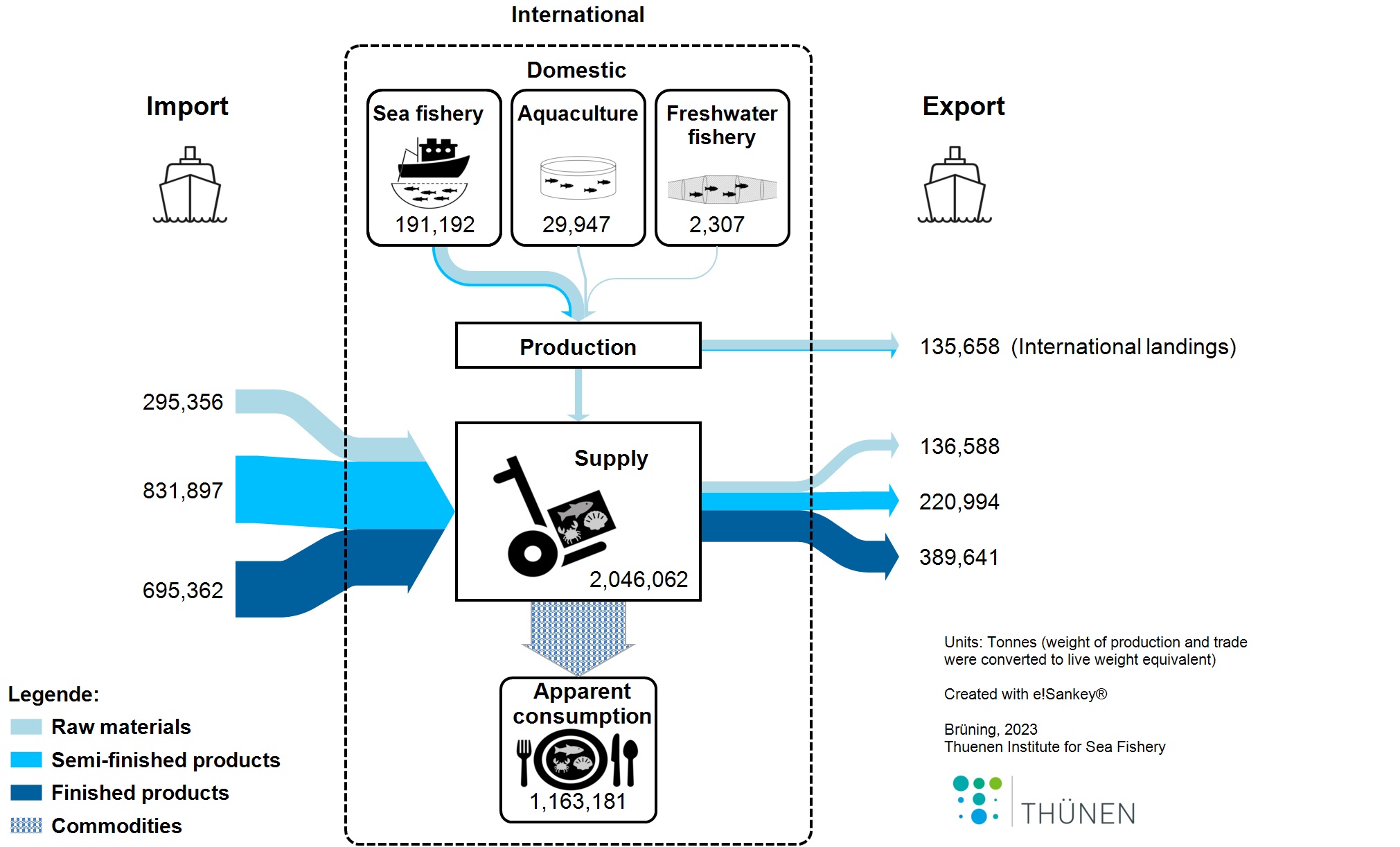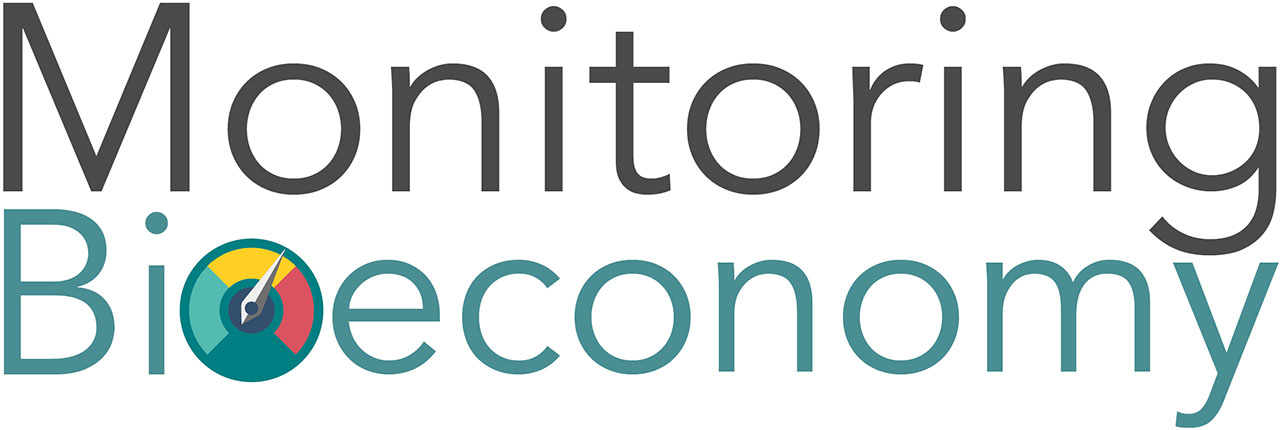German fish production is made up of sea fishery, freshwater fishery and aquaculture. The produced aquatic biomass considers finfish, crustaceans, molluscs (mussels, snails and cuttlefish) and algae in both limnic and marine waters (hereinafter, “fish and seafood”).
Annual production of sea fisheries strongly depends on the fishing quota allocated to Germany [1]. To ensure sustainable fishery, the species-specific total allowable catch (TAC) determines how much of each species can be caught in a certain area on a yearly or two-yearly basis. These quotas are adapted to the changes of the stocks of each fishing ground, which is why they can fluctuate strongly. A large part of the landings of Germany’s fishing fleet (65 – 72 %) takes place at international harbors and is therefore considered ‚export‘ [2]. Freshwater fishery comprises the economic fishery in lakes and rivers, which can have an artificial source like quarry ponds or dams and targets wild fish. German aquaculture facilities cultivate finfish, crustaceans, mussels and algae under controlled conditions in fresh as well as sea water [3].
The fish and seafood production in Germany is not sufficient to satisfy the national demand [4]. In the last decade the level of self-sufficiency has fluctuated between 17 and 24 %, meaning that barely a quarter of the fish and seafood used is produced domestically. The most important exporters to Germany are China, the USA, Denmark and Norway. Imports include raw materials, finished products and, primarily, semi-finished products, which consist mainly of fish fillets, used for the production of fish sticks for instance. Nevertheless, Germany also exports fish and seafood at different stages of processing [5]. This results in a negative external trade balance of approx. 1 000 000 tonnes.
Fish and seafood are mainly produced for food. However, the processing of fish and seafood generates residues such as fish heads, bones, shells and viscera [6] [7]. Depending on the type of fish and seafood, the share of residues ranges between 30 and 70% of the raw material. Side-streams from the fish processing have been used for by-products such as fishmeal and fish oil for quite some time, which are mainly used to supplement aquaculture and pet food. However, efforts are increasing to process the entire fish as well as seafood and algae into high-value products for various applications such as food and feed, pharmaceutical, chemical and cosmetic use, thereby turning aquatic biowaste into useful by-products [8] [9].

Material flow of fish and seafood in Germany and main import or export countries, 2020 [10]. (Source: Simone Brüning).
More interesting facts will follow soon!
Notes and references
- Read more here: https://www.thuenen.de/de/themenfelder/wirtschaftsstrukturen-und-einkommensverhaeltnisse/die-deutsche-fischereiflotte-wenige-grosse-und-viele-kleine
- Edelbohls et al. (2022). Steckbrief zur Meeresfischerei in Deutschland 2022. Available at: https://www.thuenen.de/media/ti-themenfelder/Wirtschaftsstrukturen_und_Einkommensverh%C3%A4ltnisse/Die_deutsche_Fischereiflotte/NEUSteckbrief_2022_-_Meeresfischerei_in_Deutschland.pdf
- Edelbohls et al. (2021). Steckbreif zur Tierhaltung in Deutschland: Aquakultur. Available at: https://www.thuenen.de/media/institute/fi/Aktuelles/Steckbrief_Aquakultur_in_Deutschland_2021.pdf
- Read more here: https://www.thuenen.de/de/fachinstitute/seefischerei/projekte/aquatische-produktionssysteme-neu-denken
- Iost et al. (2020). Setting up a bioeconomy monitoring: Resource base and sustainability. Thünen Working Paper 149. doi: 10.3220/WP1593762669000
- Oterhals (2023). Fish By-Product Utilization in Norway – Challenges and Future Possibilities. 1st Bremerhaven Conference on Blue Economy and Fish Processing.
- Read more here: https://blaue-biooekonomie.de/de
- Read more here: https://blaue-biooekonomie.de/de/projekte/lamuopt-ganzheitliche-nutzung-von-laminaria-und-muschel-nebenerzeugnissen-zur-optimierung-von-kreislaufbasierter-fischzucht-und-produkten-fuer-den-menschlichen-verzehr-lamuopt
- Kirchner (2023). Fish Collagen – A new trend in the processing of fish by-products. 1st Bremerhaven Conference on Blue Economy and Fish Processing.
- Raw materials: whole or gutted, but unprocessed goods; semi-finished products: filets or fish meat; finished products: smoked products, marinades and cans, frozen finished products and ready meals. Data source: BLE. Destatis. Available at: Institut für Binnenfischerei



